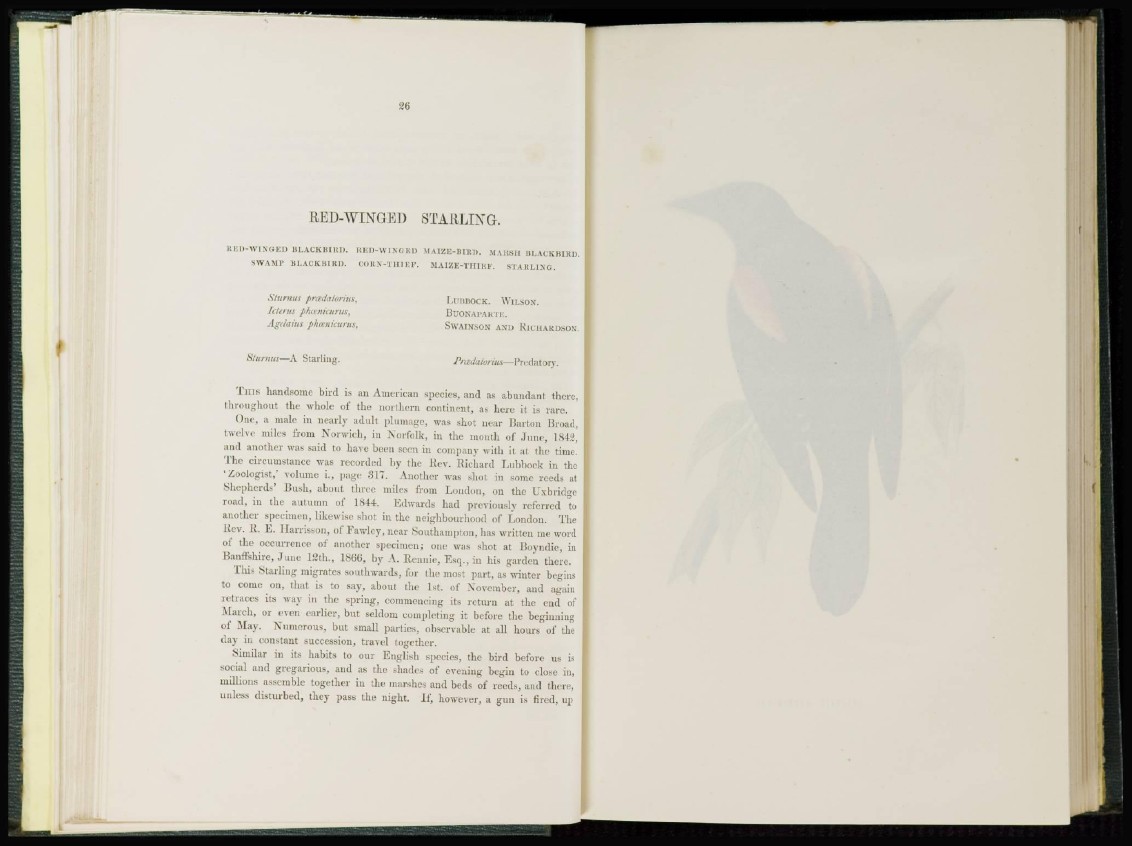
g6
EED-WINGE1) STARLING.
RED-WINGED BLACKBIED. RED-WINGED MAIZE-BIRD. MARSH BLACKBIRD
SWAMP BLACKBIRD. CORN-THIEF. MAIZE-THIEF. STARLING.
Sturnus prmdatorius,
Icterus phcenicurus,
Agi laius phcenicurus,
Sturnus—A Starlii
LUBBOCK. WILSON.
BUONAPARTE.
SWAINSON AND RLCHARDSON.
Prcedaiorius—P re dat o r v.
T h i s handsome bird is an American species, and as abundant there,
throughout the whole of the northern continent, as here it is rare.
One, a male in nearly adult plumage, was shot near Barton Broad,
twelve miles from Norwich, in Norfolk, in the mouth of J u n e , 1842,
and another was said to have been seen in company with it at the time.
The circumstance was recorded by the Rev. Richard Lubbock in the
'Zoologist,' volume i., page 317. Another was shol in some reeds at
Shepherds' Bush, about three miles from Loudon, on the Uxbridge
road, in the autumn of 1844. Edwards had previously referred to
another specimen, likewise shot in the neighbourhood of London. The
Rev. R. E. Ilarrisson, of Fawley, near Southampton, has written me word
of the occurrence of another specimen; one was shot at Boyndie, in
Banffshire, J u n e 12th., 1866, by A. Rciinte, Esq., in his garden there.
This Starling migrates southwards, for the most part, as winter begins
to come on, that is to say, about the 1st. of November, and again
retraces its way in the spring, commencing its return at the end of
March, or even earlier, but seldom completing it before the beginning
of May. Numerous, but small parties, observable at all hours of the
day in constant succession, travel together.
Similar in its habits to our English species, the bird before us is
social and gregarious, and as the shades of evening begin to close in,
millions assemble together in the marshes and beds of reeds, and there,
unless disturbed, they pass the night. If, however, a gun is fired, iqi